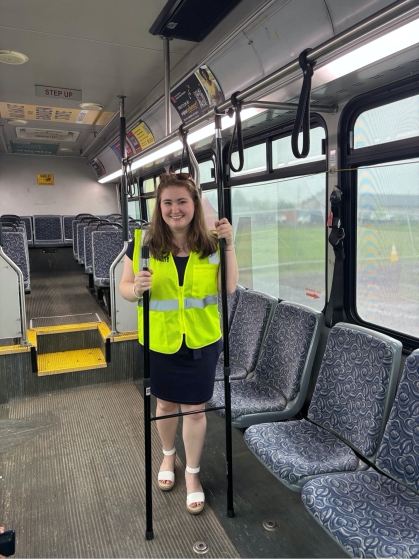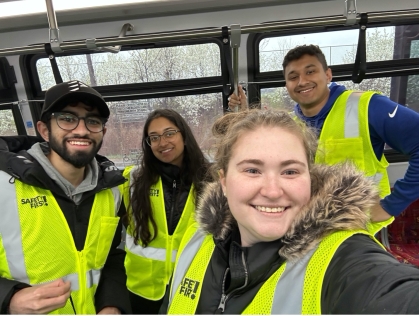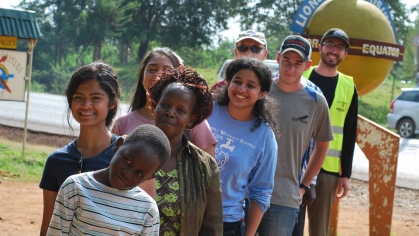Students Develop Real-world Solution for Disabled Individuals
The Senior Design project in the School of Biomedical Engineering is meant to synthesize engineering and technical knowledge gained over the course of a student’s education. It is a culmination of their undergraduate studies. For Senior Emily Sullivan, her project was a personal journey of sorts. Along with other seniors—Ria Suresh, Ethan Rodrigues Prabhu, Srijan Parikh, and Monit Patel—the team developed a product to improve stability for disabled individuals riding public transportation.

The product, Stayble, is designed to improve accessibility on public transit by increasing autonomy
and accessibility for individuals with mobility and stability disabilities, such as dysautonomia, which can cause dizziness while standing, or mobility problems from joint pain caused by any variety of medical issues. Sullivan based the concept on her own disabilities, which, although not obvious, prohibit her from reaching up to grab onto the stability strap found on buses and used by riders who cannot find a seat, a common occurrence on Rutgers’ busy buses.
The students created a two-legged device welded in the center, with adjustable legs, and with a locking mechanism that fits around the bus’s overhead bar (below center). “The locking mechanism had to be designed to be strong and fit securely around the overhead bar,” explained Prabhu. “Ideally, the bus driver would secure it in place for the passenger as they do for wheelchair passengers.” Using a floor strap assembly, those in wheelchairs are secured in place by the bus driver.
Prabhu explained that the Stayble device attaches securely in about 50 seconds, so that there is no real delay in transit service. The students chose secure, strong rubber feet to further provide the user with a stable ride. New Jersey resident John Sommer, president of Springfield Metal Products, also helped the students specify the materials needed for the prototype and welded the center bar at his metalworking shop.
Undergraduate Program Director, Kristen S. Labazzo, helped her students find a contact in IP&O’s transportation group, where John Karakoglou, Director of Transportation Services, and Domenick Rizzo, Assistant Director of Transportation Services stepped up to help the students test their prototype device.

“We spent some time with the students,” said Karakoglou, who took the students to the bus yard to try out their device. “We gave them some tips on how to move the project forward.” Karakoglou explained, for example, that all buses need to pass the Department of Transportation inspection.
The students would have to make sure that this device would pass inspection. “I told them they should go to the DOT and present it and ask what types of struggles they might encounter in introducing these on buses.
Sullivan is hoping that the device will one day be used on the Rutgers bus system.
Labazzo who, in addition to teaching, serves on a board of a medical and education center for people with disabilities, hopes the device can be patented someday and put into use. “This has been one of the best and most well-developed devices created from a collaboration,” she said of her students’ projects.


